In this article you will learn about various materials for modeling, how to teach a baby to sculpt and a few simple ideas for practicing modeling with a child.
Content
- Modeling value for child development
- Modeling and spatial thinking
- Modeling and development of fine motor and speech in children
- Modeling and synchronizing the child's brain
- Developing creative abilities through modeling
- Materials for modeling
- Children's clay plastic
- Wax clay
- Clay for sculpting
- Paste for modeling
- Dough for molding
- Test recipe for modeling
- Mass for modeling
- How to sculpt with the baby?
- Selecting the color of plasticine
- How to stretch the clay?
- How to start modeling?
- How to learn how to mold from plasticine, dough or clay?
- Molding balls and sausages
- Plastic modeling of plasticine
- Plasticizing of plasticine
- Imprints on plasticine
- Plasticine and molding dough for the youngest
- Ideas for molding with dough and plasticine
- Caterpillar from plasticine
- Plasticine engine
- Fruit from plasticine
- Plasticine molding
- Plasticine clams
- Cakes for salted dough dolls
- Plasticine jelly
- Figures made of plasticine with peas
- Pictures for the racesrashivaniya
- Butterfly plasticine plasticine
- Plastilinografiya
- molded from clay for children 3-4 years
- How to order clay Aliekspress online store?
- Video: Lepim with babies
What can be so useful with a child that will bring not only pleasure, but also help in development? Of course, creativity! One of the most common and favorite kinds of children's creativity is modeling.
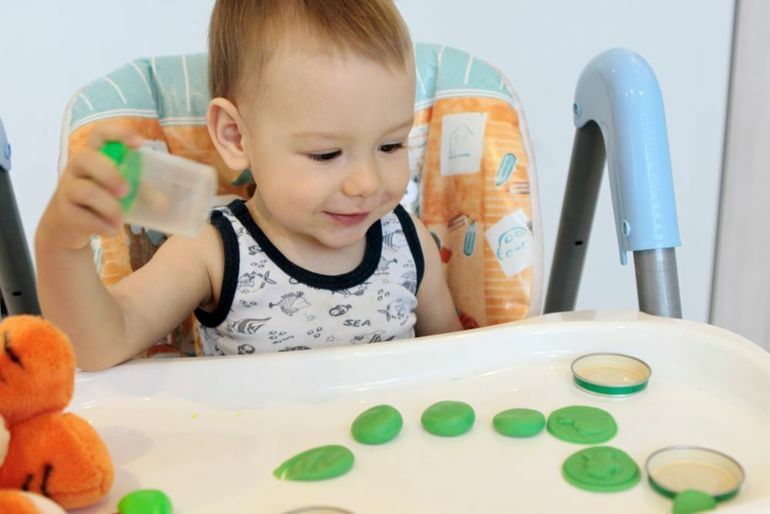
The value of molding for child development
The use of modeling for children is huge. These exercises have a good effect on the nervous system of the child, small hand motor skills are trained, spatial thinking is formed, the child learns the shape of objects, their colors. It has a beneficial effect on the emotional and mental state of the child. With the help of modeling, a child can create his own world, as he sees and feels it.
Modeling is one of the most popular forms of creativity, in which the child includes to the maximum his sense of touch. He creates something of his own, and not only sees it, but also feels, holds, can change, if necessary.
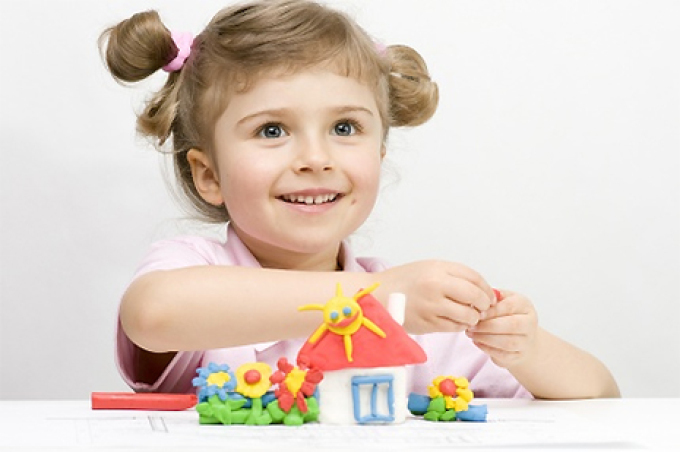
Thanks to the modeling, the child's mental development takes place, it affects the health and emotional state of the baby, helps the development of the person.
Modeling has the following actions for child development:
Modeling and spatial thinking
- increases sensitivity, helps to sensory perceive shape, weight, texture, color
- forms spatial, imaginative and abstract thinking, stimulates the imagination of
- . The child learns to feel, correctly evaluate, see others around himobjects and the living world from a different angle, find solutions in desperate situations
Modeling and development of fine motor skills and speech in children
trains the fine motor skillsI in turn take an active part in the development of speech, influences the coordination of movements, trains memory and helps the child to think logically.
Modeling and synchronization of the child's brain
helps synchronize actions with both hands
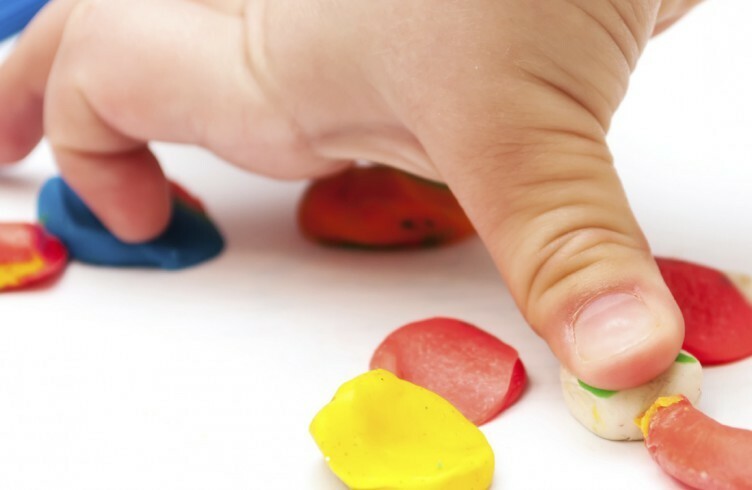
leads to strengthening of communication between the brain hemispheres, thanks to which the attention develops
Developmentcreative abilities through modeling
- the child learns perseverance and patience, be careful
- children learn to focus, make plans and fulfill the plans, compare the plans with the result, if necessary make changes
- develops aesthetic taste
- develops the child's sense of self-worth, gives self-confidence
- childlearns to experiment and make all the new discoveries of
- through modeling, a child can express, in a way accessible to him, his emotions, both positive and negative
In addition, regular classes such calm games, as molding, normalize sleep, help calm the too-active kid, reduce excitability, the child becomes more calm and less irritated.
Materials for modeling
There are several materials with different properties that are suitable for modeling. All of them are good in their own way and all have their shortcomings.
Children's plasticine
Plasticine for molding needs to be chosen correctly, because a very hard child can not stretch and it will fall apart in his hands, and a very soft one will stick to everything and make it something very difficult.
Do not buy children plasticine with a fruity smell, otherwise the child instead of modeling will try to taste it. 
From import companies we can advise plasticine JOVI , it is soft enough and made of natural plant base. In the composition of this plasticine you will find rice and wheat flour, starch and natural dyes. Everything that this company produces is safe and meets the international standard ISO 9002. It is also good for children of plasticine firms KOH-I-NOOR and Crayola.
Wax clay
This is a new kind of plasticine that fits small children, because it is softer and more plastic. It is made on wax basis, therefore it is safe for children. His pieces are well stuck to each other and it's easy to work with small, fragile handles. 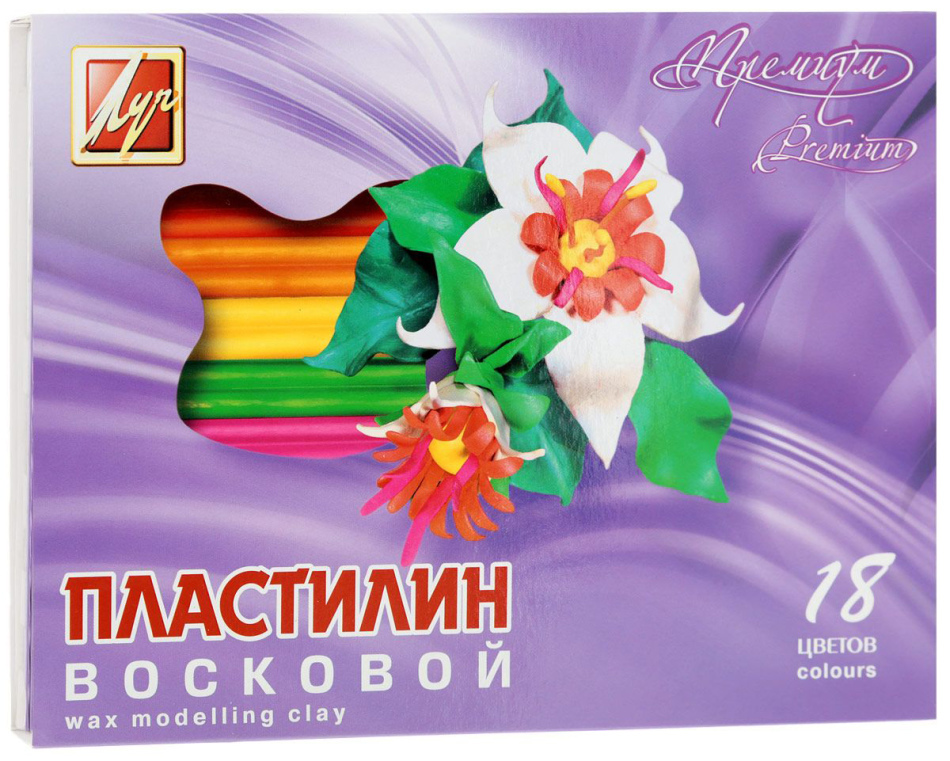
This plasticine is great for plasticine studies, read about it below.
Clay for molding
Clay is used for modeling for many years and children work with it with pleasure, although their hands then have to be thoroughly laundered.
Clay is sold as a powder and can be diluted with water at home. If you do not want to mess with it, there is clay already ready.
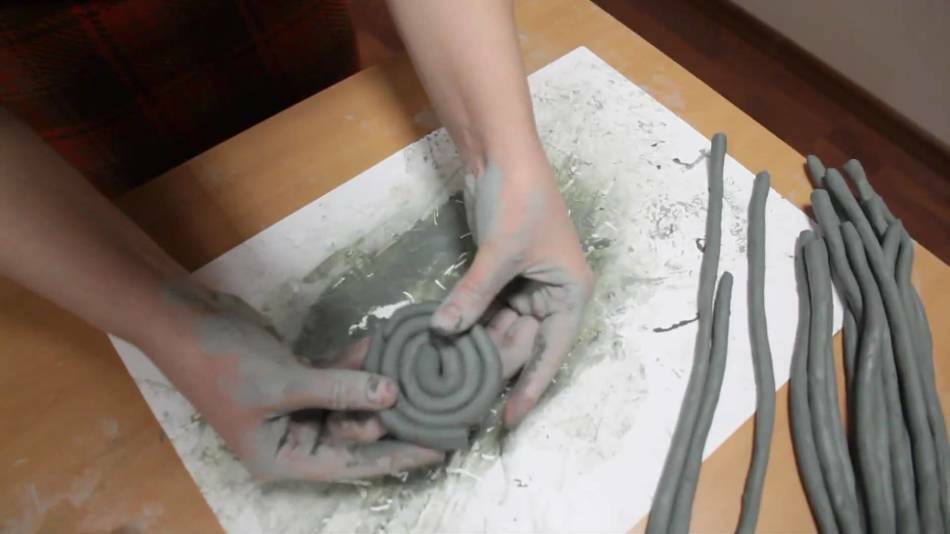
This material is good for its low cost and it is possible to give his child a lot, let him build a big castle or bridge, this entertainment will not hit the pockets of his parents.
Clay can still be used for drawing, especially with young children. Just dilute it with water and pour it on a flat surface. All, now you can draw with your fingers or wand, or whatever you want.
There are ready-made kits for creativity with clay, for example, for making dishes, they also contain a potter's wheel. 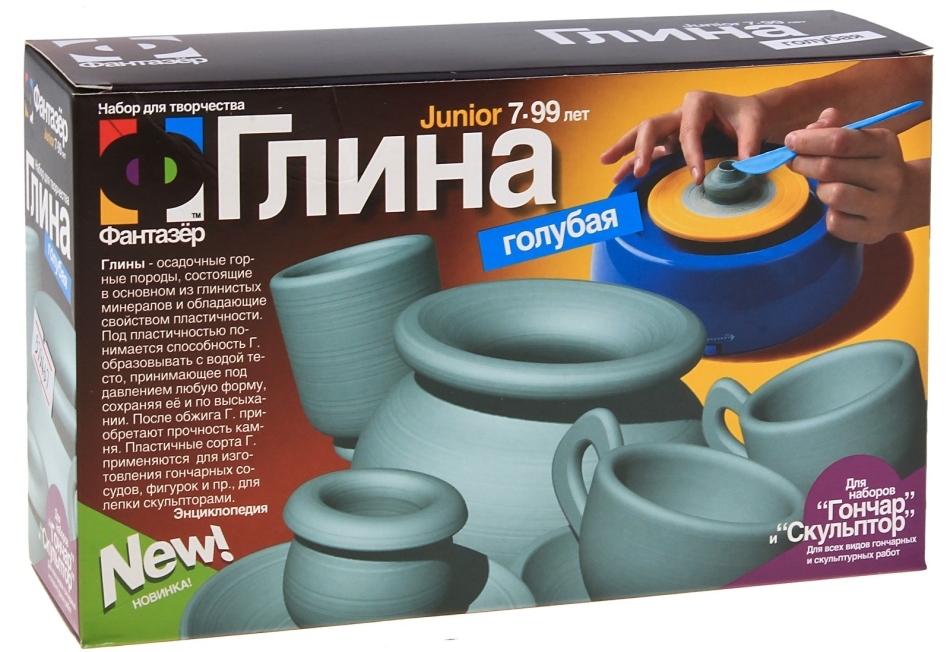
If you want to leave a clay craft for memory, it must be burned at 900 ° C for a couple of hours. If you do not do this, then the craft, of course, will dry up, but it will be fragile and crumbling at the first opportunity. You can still anoint it with PVA glue, it will give the craft a little strength.
Paste for modeling
This is something like a mixture of plasticine with clay, something like natural clay. This paste is pleasantly kneaded in the hand, it is plastic, soft, very similar to clay in work. But it has one advantage - it does not need to be baked, it hardens itself. Becauseit is available only in white or in terracotta, it can be colored after hardening and opened with a clear varnish. 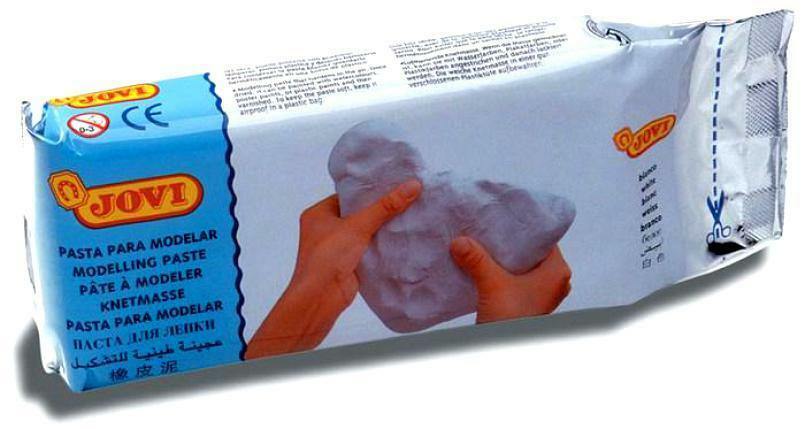
Paste for modeling is designed for classes with children from 3 years.
Dough for modeling
Salty dough for modeling can be bought in the store ready or made independently. The recipe for this test is given below. 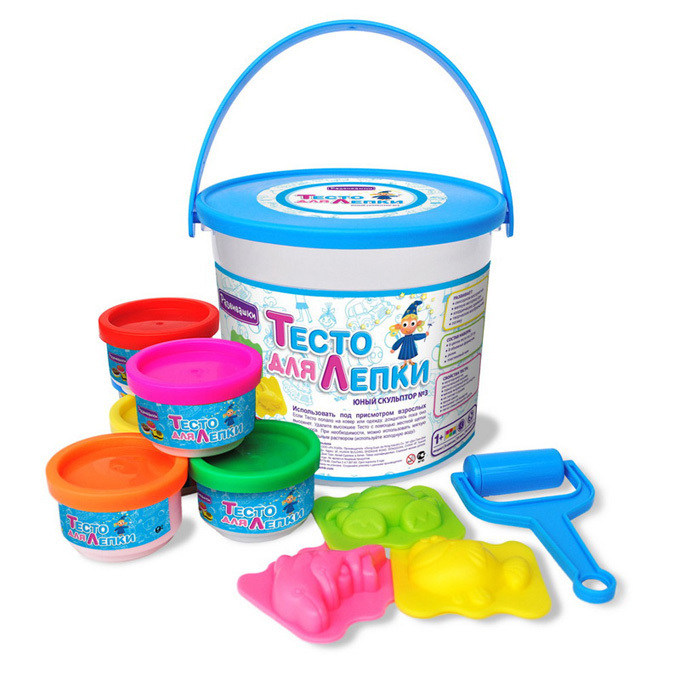
This material is great for very young children, because it is very easy to work with. To sculpt a child can from an unpainted dough, and then paint with colors. There is a dough already with dyes, but there are not so many colors, although for the kids 4 colors are enough to make the variety of colors not distract the crumb from modeling. If you want to keep the craft, just leave it for a while and it will dry up and harden.
Test recipe for molding
This recipe produces a dough very similar to the well-known brand "Play Doh".It is very soft, does not stick to hands, it can be stored and used for a long time, but in order to cook it you need only a few minutes.
For the test, you will need:
- 1 tbsp.white flour
- 1/2 tbsp.shallow salt
- 1 tbsp.any vegetable oil
- 2 tsp.citric acid
- little water, up to 1/2 cup
- any food coloring
Pour into the pan all dry ingredients and mix thoroughly, then add the vegetable oil. Place the saucepan on the stove for medium heat, add the dye to the water and pour it into the pan with a slow trickle, mix constantly until thick, the mass should become uniform. When you interfere, the mass lags behind the walls and bottom of the pan and turns into one lump. When this happens, take out the dough and mix it on a table, sprinkled with flour.
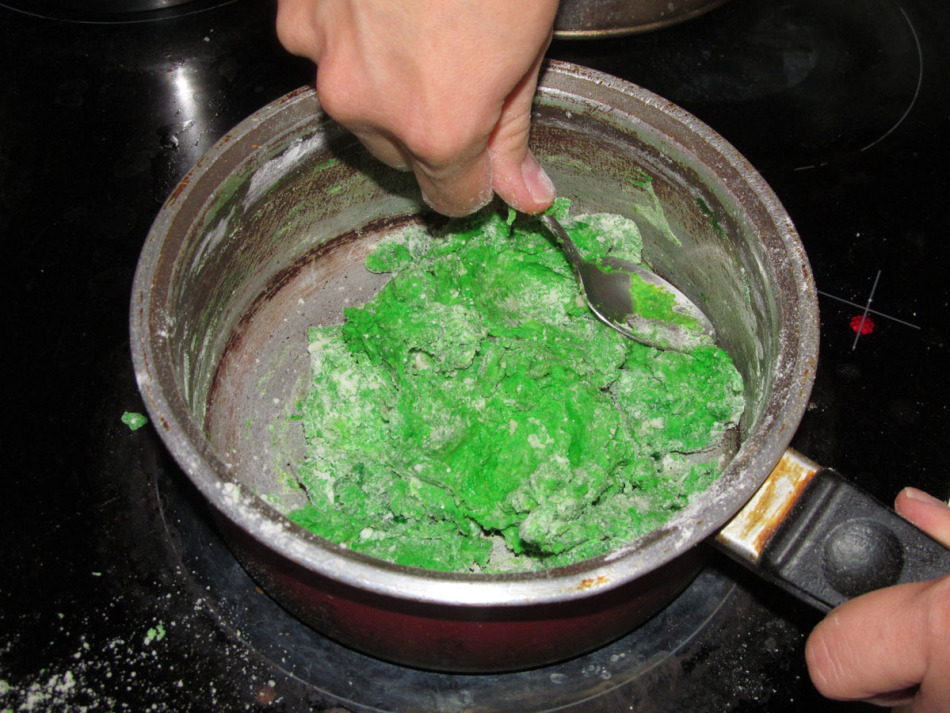 Out of this amount of ingredients, you will get a ball of dough for shaping the size of a big fist.
Out of this amount of ingredients, you will get a ball of dough for shaping the size of a big fist.
It can be stored in the refrigerator, pre-wrapped in a food film, or in a plastic container with a lid. Before working with the test, you need to stretch it a little in your hands and it will be ready.
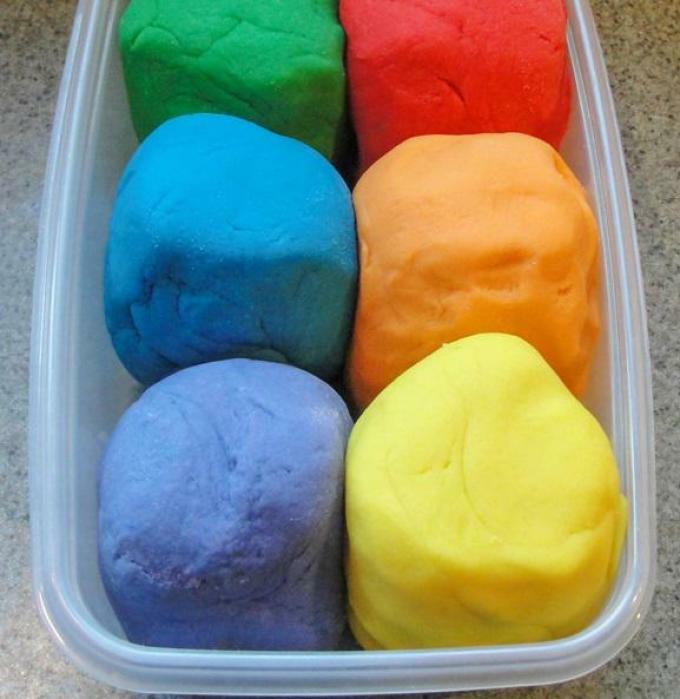
Mass for modeling
This material is very pleasant to the touch, with velvety texture, light and soft. This mass is well stretched, but does not stick. If you mix pieces of different colors, you get a new color or shade. It does not require baking and it dries itself for 6-8 hours in the air.
Still it has an interesting property to recover, if it has not completely dried up. It can be moistened with water, for example, by spraying from a spray gun or wrapping a wet piece of cloth, and then sealing it for a while. Thanks to this, an article from this material can be corrected or made some changes. 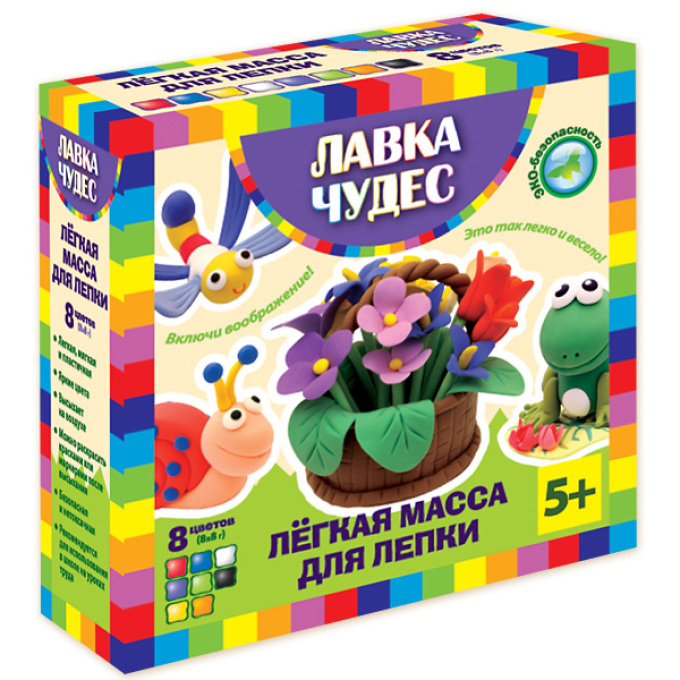
However, the mass for modeling has a serious drawback - its price, for kids to buy it is not rational, it is good for just smaller and more detailed work.
How to sculpt with a baby?
When working with plasticine or other materials for modeling, you should definitely be near the child, and not only monitor his work, but also sculpt with him.
Do not expect much from the baby, he just begins his acquaintance with the new material. Choose classes for the child's age.
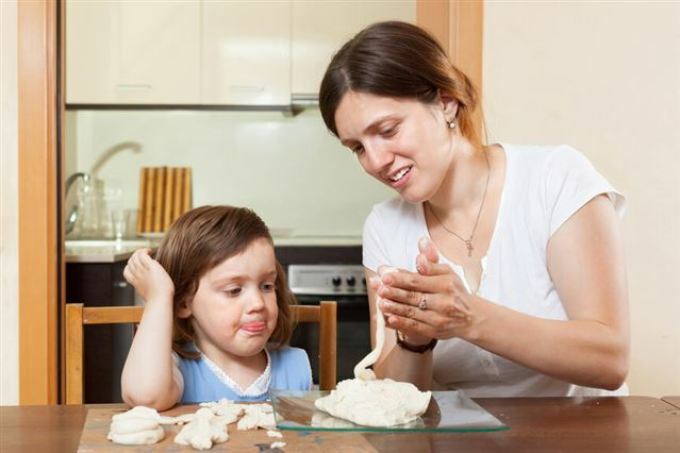
Selecting the color of plasticine
Give the baby a choice of color, but do not offer many options, two are enough.
Do not impose your opinion on it, it may not coincide with the child's preferences.
How to mash the clay?
Begin to knead the material, you are your own piece, your child, let him see what you are doing and try to repeat it yourself. When the clay is ready, you can begin to sculpt.
How to start modeling?
Simple tasks, for starters, there will be enough for the kid to become interested in this kind of creativity. Give him a pinch, show how to make a cake from it. Simple ideas that you can do with clay, there are a lot of them and some of them are described below.
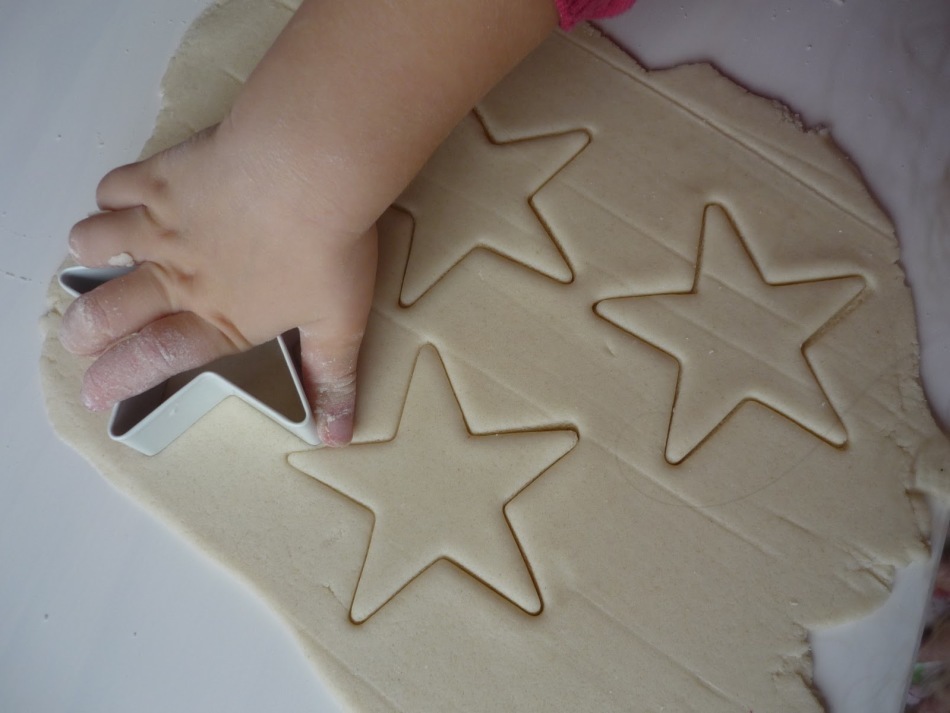
How to learn how to mold from plasticine, dough or clay?
- You do not think that when you give a child clay, he immediately blinds something concrete? He will certainly try it first, taste it on the table, fold to his toys. You need to teach your child to use clay for the purpose of
- First thing you need is to interest the child. You do not need to persuade him or force him, he must himself want to. To do this, start working with the clay yourself and the child will be interested.
- Buy a soft plasticine or dough for modeling first, and you can make it yourself, see the recipe above. With soft material, the child will work more willingly, because he will get
- Pieces of .This is the first thing you need to show the baby how to tear off a piece and stick it back. You can turn everything into a game, feed the cow, tearing pieces off the green plasticine. You can tear off a piece on a cardboard, or for example a picture of a Christmas tree, as if dressing it up
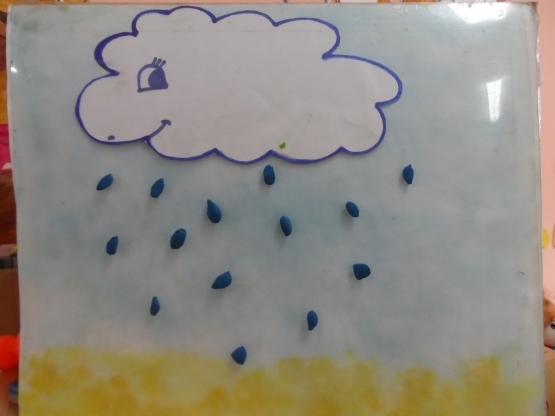
We make balls and sausages
Beads and sausages .Show the child how to make balls from plasticine, and then they can be cheerfully crushed or blinded by a snowman. Make sausages between the palms or palm on the table, from it you can then make a ring or spin into a spiral
Flat molding from plasticine
Flattening - is a very fascinating activity, because with it you can make a roof for the house, ears for a dog. It is possible to stick the flattened pieces to the paper, thus completing the drawing
Smearing of plasticine
Smearing .Also very necessary method. Do this first on the board to work with plasticine, then you can so "draw" on paper.
Imprints on the plasticine
Imprints .Children like this just like it. Print something on a flattened plasticine, for example, a figurine from a sorter, or be like the legs of a toy animal.
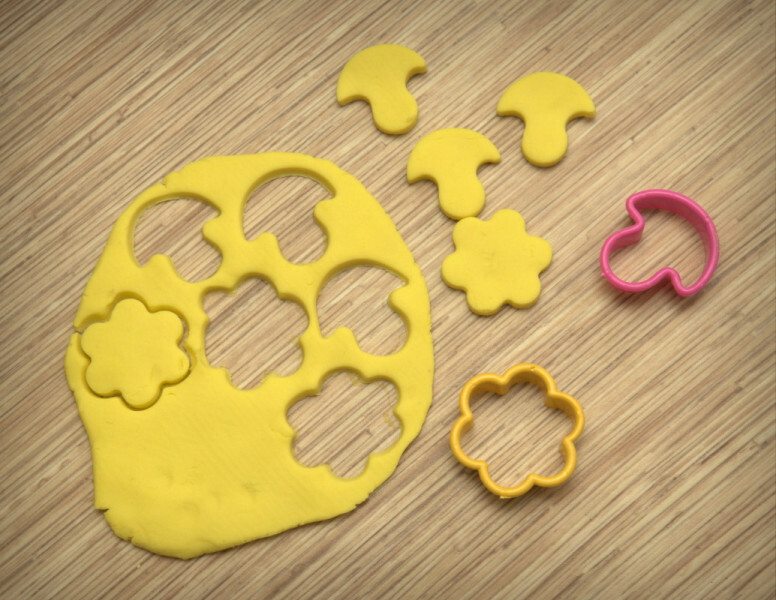
Vase from plasticine
Cladding .Show the child how to glue plasticine some capacity, for example, a glass, and on top press the beads. You will have a beautiful vase. For the smallest, you can prepare animal figures from cardboard and offer to mold clay on them.
These simple tips will help you introduce the child to plasticine. But the main thing in these classes is a good mood. Molding should first of all bring pleasure.
Plasticine and dough for modeling for the smallest
- Salted dough or dough for modeling is great for putting on it prints of various objects. To do this, roll the dough on the table and try to go over it with a hair comb, poke a cap from the felt-tip pen, print the details from the designer, and roll it over with a typewriter. You can try to combine several prints in one picture.
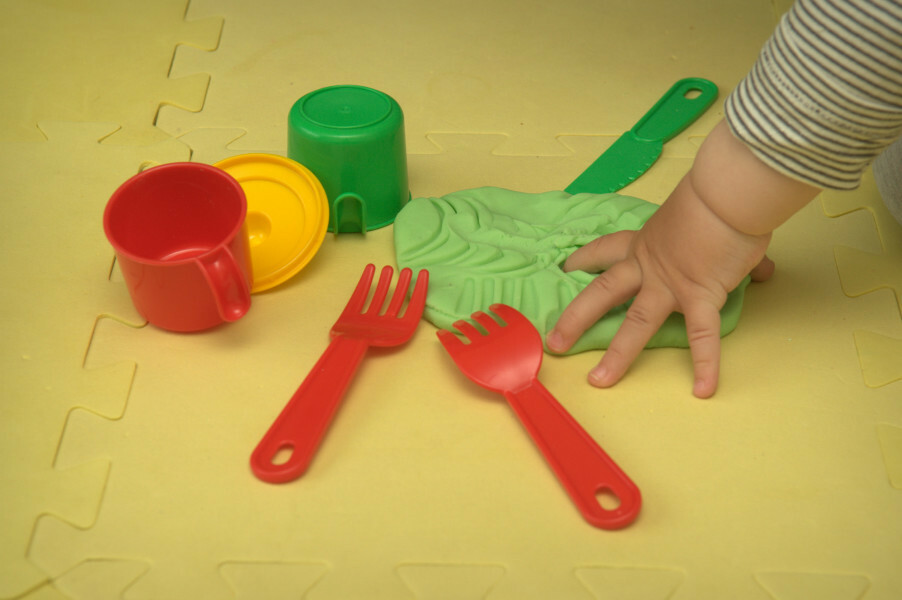
- On a walk with the child, look for the leaves that are suitable for prints, so that they have large veins. Lay the sheet with the back side on the clay and go over it with a rolling pin, gently remove the leaf and see how the child will be surprised. You can make a dough of different colors, for example mix red and yellow, then the leaves will turn out like autumn.
- You can also print a piece of lace in the same way. Then from this test you can cut out the figures, they will be completely in lace embossing.
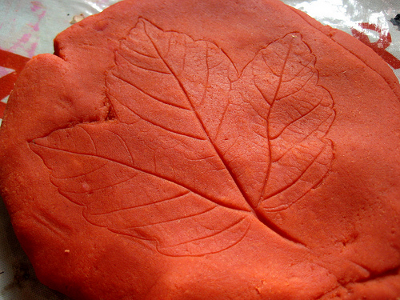
- Get your sets to cut the cookies and print them on the test. You can make a whole picture, for example, print a circle around the sun, add rays to it with fingerprints from the handle, put a Christmas tree under it, bunny under it, etc. You can not imprint the figures, but cut them entirely
- There are rolls with different textures in the molding kits, they leave interesting prints. But you can make these rollers yourself. To do this, take a cardboard cylinder from under the napkins or foil, apply a pencil pattern on it, and from above on the pattern, walk with a glue gun. When the glue solidifies, it will harden and you will have your own rolling pin, leaving the unique patterns
Ideas for molding with dough and plasticine
There are a lot of possible ideas for practicing modeling and you can always come up with your own, give vent to your fantasy and fantasy of your child. We offer you some simple ideas.
Caterpillar made of plasticine
Make a lot of balls, you can multi-colored, connect them in descending order by size, first make eyes and horns - you got the caterpillar .Make a ladybug and bee as shown in the picture
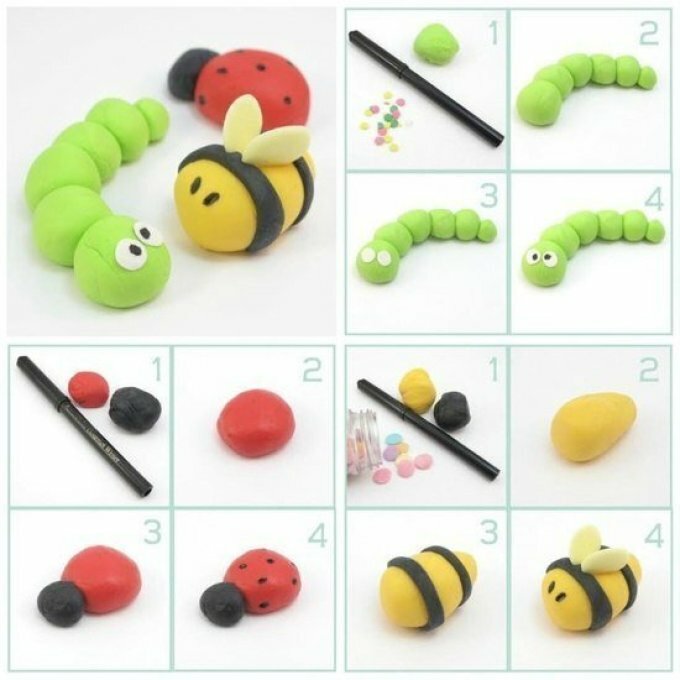
Steam locomotive of plasticine
It is possible to make locomotive from balls, sausages and candles
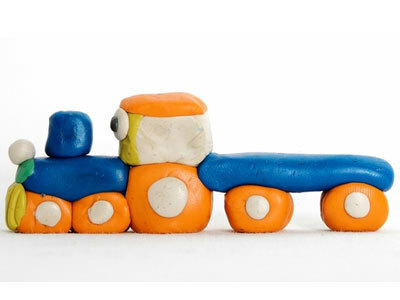
Fruit from plasticine
Very simple and funny "live" fruit 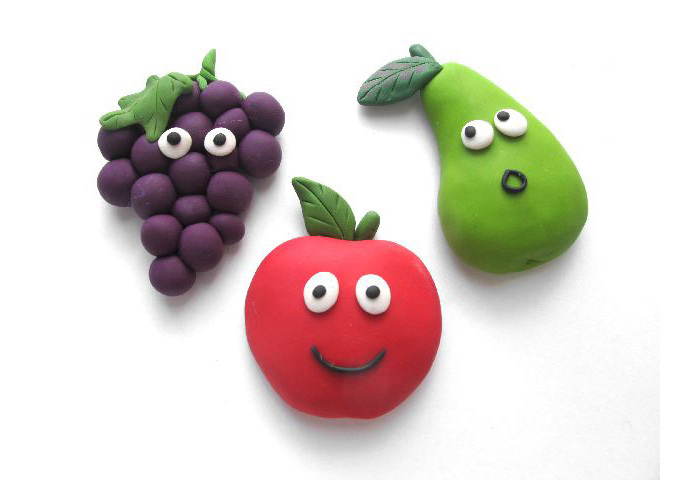
Molding a flower from plasticine
Flattening balls and sausages, it turns outbeautiful flower
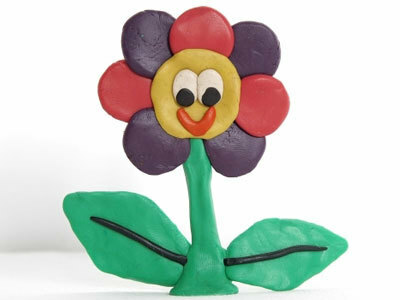
Snails from plasticine
Long sausages can make cute snails
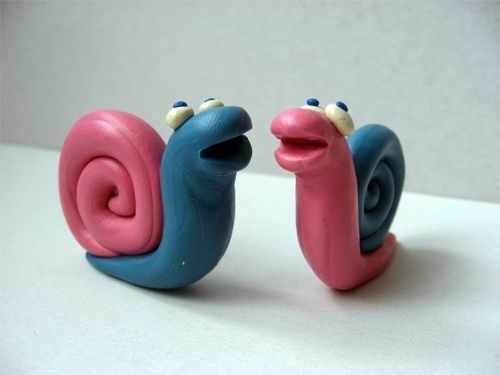
Cakes for dolls from salted dough
The child will like to make beautiful cakes for the doll
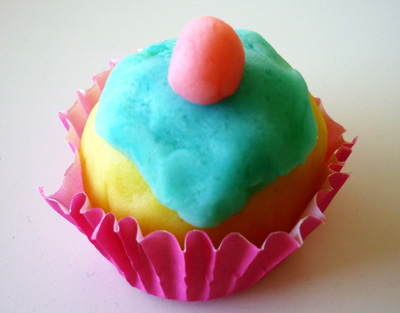
Hedgehogs from the plasticine
It's very simple and interesting to do these here hedgehogs
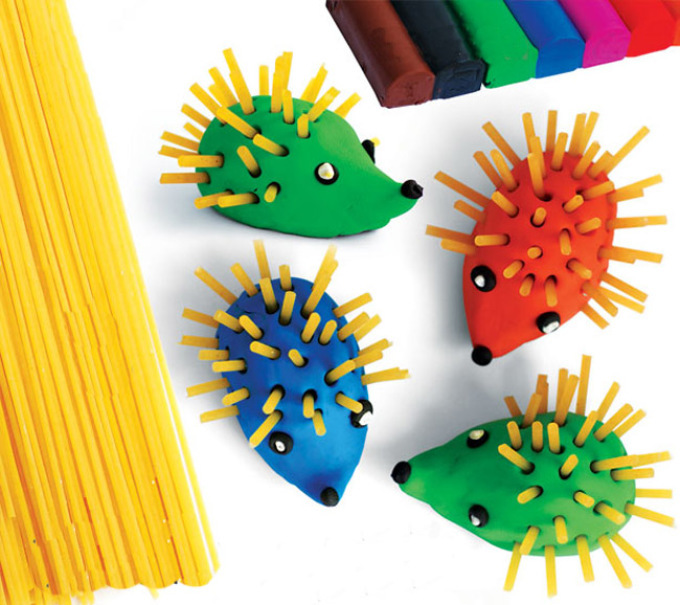
Figures from plasticine with peas
You can insert peas, nuts, rump, pasta in different figures from plasticine 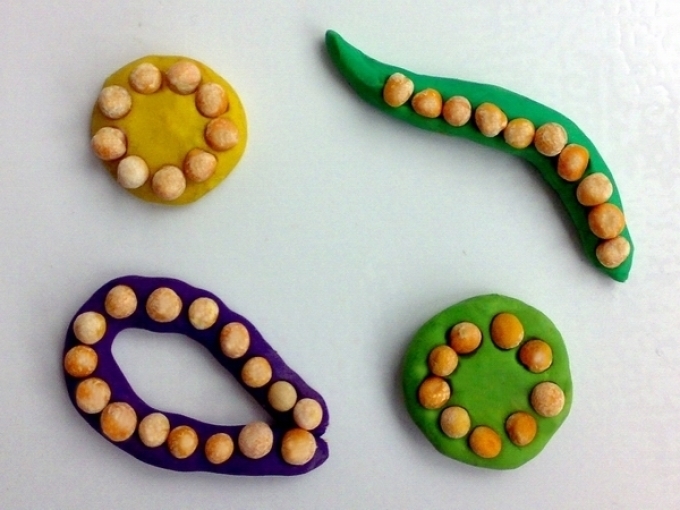
Pictures for coloring with plasticine
Suggest the kid to fill holes in pictures. Pictures can be sealed with tape or laminated to use more than once
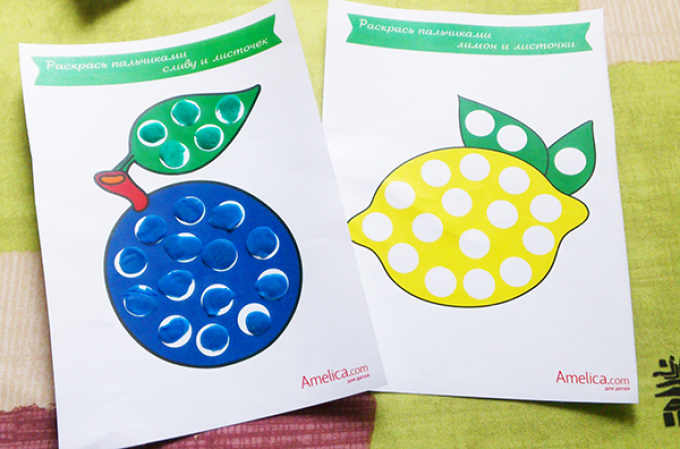
Butterfly made of plasticine
You can make this here butterfly or other drawings
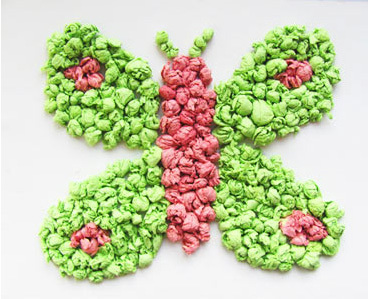
More ideas with step-by-step instructions can be found in the article Ideas for molding from dough and plasticine. We model food, animals, toys
Plasticinography
Plasticine is an unconventional drawing technique. In the paintings made in this technique, there are convex objects that are made of plasticine.
With the help of plasticine and its combination with other techniques of creativity, original and unique works are created.
The use of this kind of creativity for the development of the child includes the benefits of drawing and modeling. In addition, the child, creating a picture of plasticine, rolls and smeared plasticine, due to which to learn to feel their hands better and more confidently to manage them.
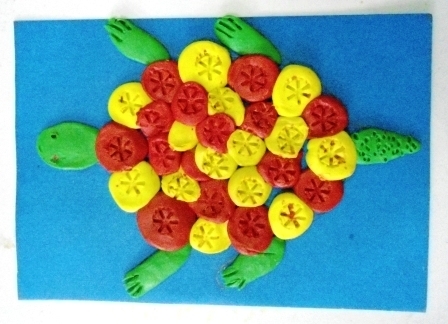
Plasticine molding for children 3-4 years old
For children under 4 years old, you can offer simple tasks:
- make sun , for this, put a yellow round flat cake on blue cardboard, and smeared small pieces of plasticine, making the
- beams to make weed, smearing the green pieces of dough, plant flowers, crushing on the cardboard colored balls in the form of florets
- on the already painted hedgehog to make needles, also smearing plasticine
- to make multi-colored salute in the sky( on a dark blue cardboard)
- decorate the Christmas tree by hanging balls and on the
- garland to make the autumn leaves on the tree and show how they fall
- make snowflakes on the sky or rain

- Older children can create more complex works, mix techniques, for example, add natural material to a picture, can work on details, correct or create something using the
- stacks. They can make story pictures, depict animals, plant worlds, add a few characters. The older the child, the more opportunities and skills that he uses in his work, the harder the job he can offer
- . After such a child's work it is important to support and invite to come up with a story about what he painted. This will help the development of speech, facilitate the communication of the child with peers
- Encourage the child for any successes and cheer if it does not work. It is important to select assignments by age. If he will cope with the task, it will instill in the child self-confidence, will bring pleasure from creativity and he will rejoice at his results. Such work will bring maximum benefit and satisfaction to both the child and the parents of
How to order clay in the online store Aliexpress?
Click the link below to choose the plasticine
.25D0% 25B4% 25D0% 25B5% 25D1% 2582% 25D1% 2581% 25D0% 25BA% 25D0% 25B8% 25D0% 25B9.html? Ltype = wholesale & d = y & origin = n & isCPCP = y & catId = 0 &initiative_id = SB_20160227091419 & SearchText =% D0% BF% D0% BB% D0% B0% D1% 81% D1% 82% D0% B8% D0% BB% D0% B8% D0% BD +% D0% B4% D0% B5% D1% 82% D1% 81% D0% BA% D0% B8% D0% B9
